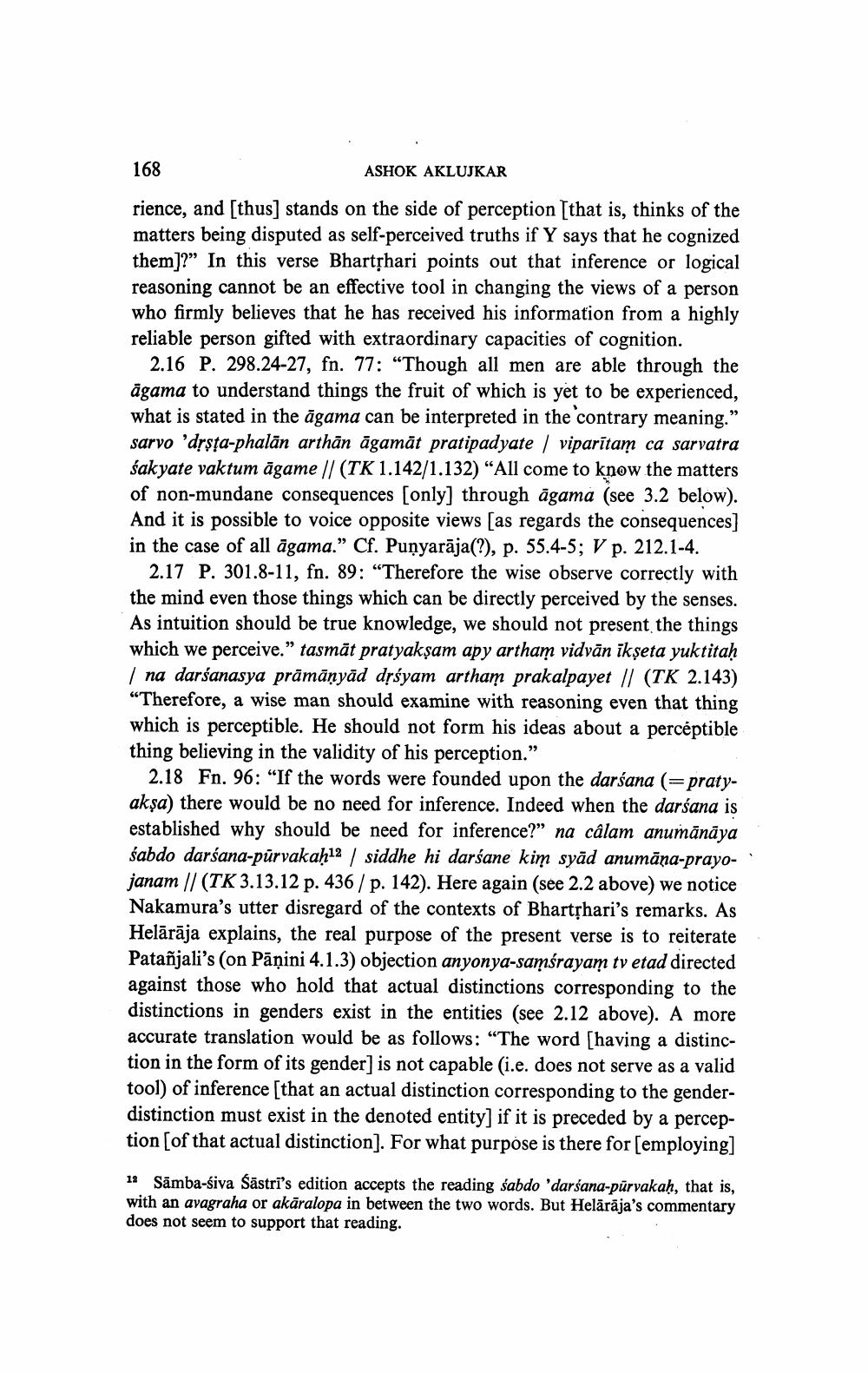Book Title: Nakamura On Bhartrhari Author(s): Ashok Aklujkar Publisher: Ashok Aklujkar View full book textPage 8
________________ 168 ASHOK AKLUJKAR rience, and [thus) stands on the side of perception (that is, thinks of the matters being disputed as self-perceived truths if Y says that he cognized them)?” In this verse Bharthari points out that inference or logical reasoning cannot be an effective tool in changing the views of a person who firmly believes that he has received his information from a highly reliable person gifted with extraordinary capacities of cognition. 2.16 P. 298.24-27, fn. 77: “Though all men are able through the āgama to understand things the fruit of which is yet to be experienced, what is stated in the āgama can be interpreted in the contrary meaning." sarvo 'drsta-phalān arthān agamāt pratipadyate / viparītam ca sarvatra sakyate vaktum ägame || (TK 1.142/1.132) “All come to know the matters of non-mundane consequences [only] through āgama (see 3.2 below). And it is possible to voice opposite views [as regards the consequences) in the case of all āgama." Cf. Punyarāja(?), p. 55.4-5; V p. 212.1-4. 2.17 P. 301.8-11, fn. 89: "Therefore the wise observe correctly with the mind even those things which can be directly perceived by the senses. As intuition should be true knowledge, we should not present the things which we perceive.” tasmāt pratyakşam apy artham vidyān ikșeta yuktitaḥ / na darśanasya prāmāṇyād drśyam artham prakalpayet // (TK 2.143) “Therefore, a wise man should examine with reasoning even that thing which is perceptible. He should not form his ideas about a perceptible thing believing in the validity of his perception." 2.18 Fn. 96: "If the words were founded upon the darśana (=pratyakşa) there would be no need for inference. Indeed when the darśana is established why should be need for inference?” na câlam anumānāya śabdo darśana-pūrvakaḥ12 / siddhe hi darsane kim syād anumāna-prayojanam // (TK 3.13.12 p. 436 / p. 142). Here again (see 2.2 above) we notice Nakamura's utter disregard of the contexts of Bharthari's remarks. As Helārāja explains, the real purpose of the present verse is to reiterate Patañjali's (on Pāṇini 4.1.3) objection anyonya-samśrayam tv etad directed against those who hold that actual distinctions corresponding to the distinctions in genders exist in the entities (see 2.12 above). A more accurate translation would be as follows: "The word (having a distinction in the form of its gender) is not capable (i.e. does not serve as a valid tool) of inference [that an actual distinction corresponding to the genderdistinction must exist in the denoted entity] if it is preceded by a perception [of that actual distinction]. For what purpose is there for (employing] 12 Sāmba-siva Šāstri's edition accepts the reading sabdo 'darśana-pūrvakaḥ, that is, with an avagraha or akāralopa in between the two words. But Helārāja's commentary does not seem to support that reading.Page Navigation
1 ... 6 7 8 9 10 11 12 13 14 15
